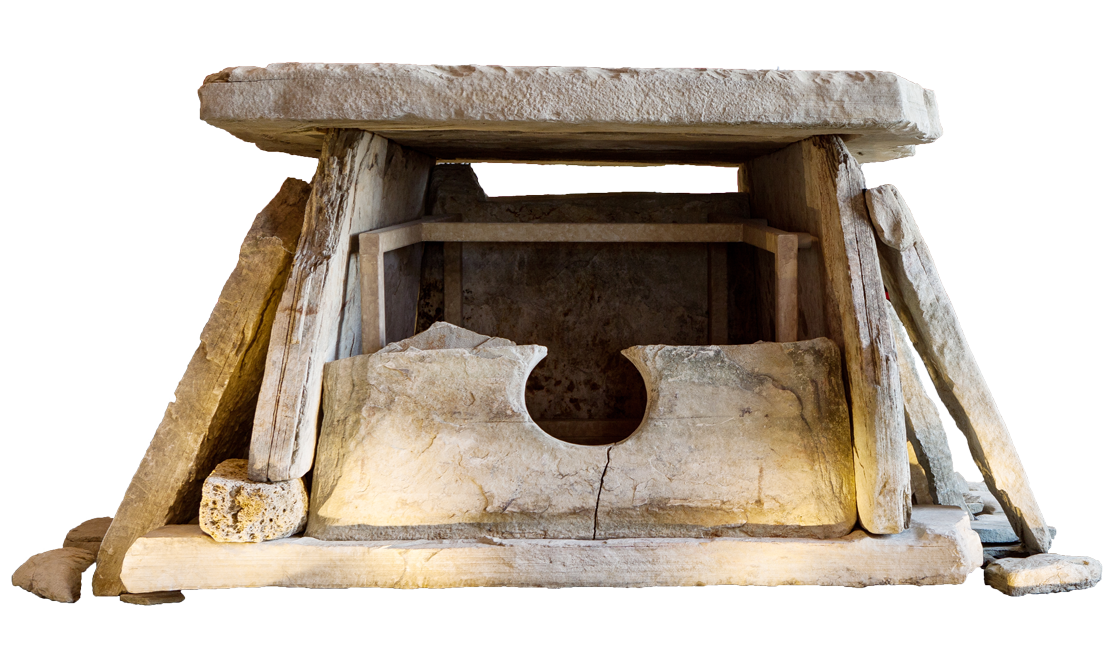Dolmen “Koliho”

Dolmen “Koliho”, ancient stone burial of the II millennium BC was discovered in 2008 on the uncovered bank of the river Koliho in Krasnodar region. Walls, the floor and the roof of the dolmen are made of treated stone slabs of seven toneы in common weight. To provide some additional hardness walls were underpin with broken slabs and revetedwith big boulders.
More information...There are twenty five of such original boulders shown at the exposition. A round hole that was closed with a stone plug has remained in the damaged slab on the front side of the dolmen. Along with human bones some ceramic pots, a bronze spear-head and a stone disc with astral symbols were found inside. It is defined that people started to use the dolmen in XIX-XVIII centuries BC.
The dolmen was used as a tomb for almost five hundred years. The remains of related men, women and children were inside it.
Each dolmen is a unique megalithic building, unique tribal tomb, often with its own name.
Because of the danger of destroying the dolmen “Dolmen Koliho“ by waters of the river it was carted away and reconstructed at the exposition of the State Historical Museum – the rescue operation itself is unique.
